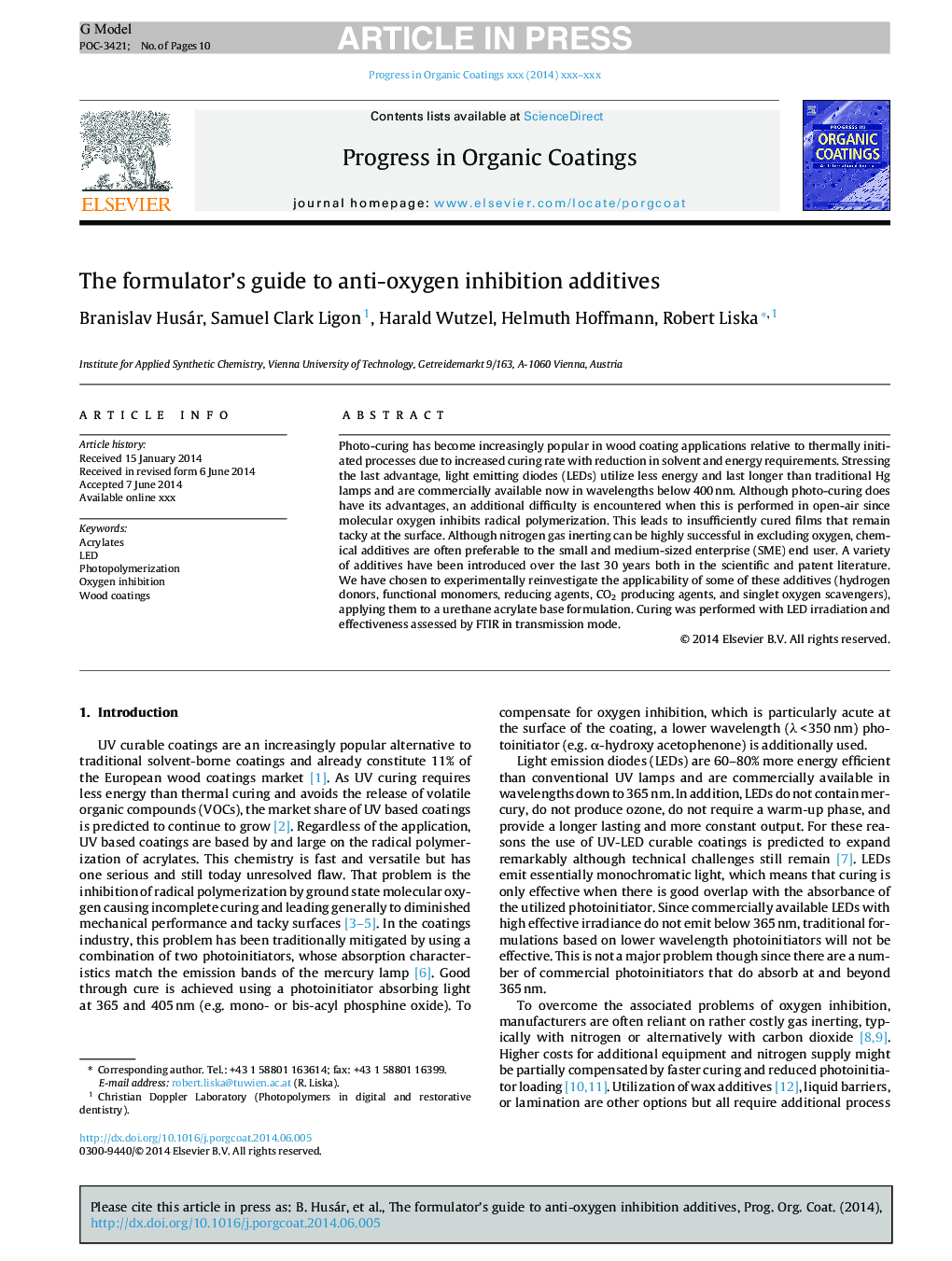| Article ID | Journal | Published Year | Pages | File Type |
|---|---|---|---|---|
| 10397934 | Progress in Organic Coatings | 2014 | 10 Pages |
Abstract
Photo-curing has become increasingly popular in wood coating applications relative to thermally initiated processes due to increased curing rate with reduction in solvent and energy requirements. Stressing the last advantage, light emitting diodes (LEDs) utilize less energy and last longer than traditional Hg lamps and are commercially available now in wavelengths below 400Â nm. Although photo-curing does have its advantages, an additional difficulty is encountered when this is performed in open-air since molecular oxygen inhibits radical polymerization. This leads to insufficiently cured films that remain tacky at the surface. Although nitrogen gas inerting can be highly successful in excluding oxygen, chemical additives are often preferable to the small and medium-sized enterprise (SME) end user. A variety of additives have been introduced over the last 30 years both in the scientific and patent literature. We have chosen to experimentally reinvestigate the applicability of some of these additives (hydrogen donors, functional monomers, reducing agents, CO2 producing agents, and singlet oxygen scavengers), applying them to a urethane acrylate base formulation. Curing was performed with LED irradiation and effectiveness assessed by FTIR in transmission mode.
Related Topics
Physical Sciences and Engineering
Chemical Engineering
Process Chemistry and Technology
Authors
Branislav Husár, Samuel Clark Ligon, Harald Wutzel, Helmuth Hoffmann, Robert Liska,
